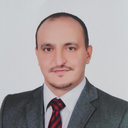[The importance of bronchoalveolar lavage sample for galactomannan, 1,3-ß-d-glucan and PCR tests].
Schlüsselwörter
Abstrakt
Opportunistic fungal infections are life threatening especially for immunosuppressed patients. Early and accurate diagnosis is very important for the prompt initiation of treatment and to reduce unnecessary use of antifungal drugs. In recent years, efforts providing more rapid and more sensitive diagnosis of invasive fungal infections have been increasing. These methods include detection of fungal antigens, specific antibodies, fungal metabolites and DNA in the clinical samples. In this case, we report a seven year-old male patient with cystic fibrosis and diffuse large B-cell lymphoma, who presented with fever, vomiting and chronic cough. Diffuse parenchymal infiltrations and alveolar opacities in the inferior lobe of right lung and focal patchy alveolar infiltrates in different segments in both lungs were seen in thoracal CT scanning. Bronchoalveolar lavage (BAL) sample obtained by bronchoscopy was sent to the mycology laboratory and hypha elements that were compatible with Aspergillus were seen in direct examination. Aspergillus fumigatus was isolated from the culture of BAL sample. Real-time polymerase chain reaction (Rt-PCR), galactomannan (GM = 1.08 ng/ml) and 1,3-ß-D-Glucan (BG > 523 pg/ml) tests in BAL sample yielded positive results, however simultaneously performed PCR, GM (0.13 ng/ml) and BG (< 7 pg/ml) tests in serum sample were found to be negative. Treatment with voriconazole was started and continued for 45 days. The patient was discharged after improvement of his general state. It was concluded that PCR, GM and BG tests performed both in sera and BAL samples might aid to the early diagnosis and treatment of patients with invasive fungal infections in immunosuppressed patients. These data should be supported with further larger scale studies.




